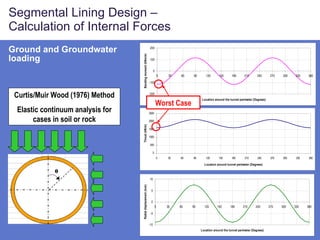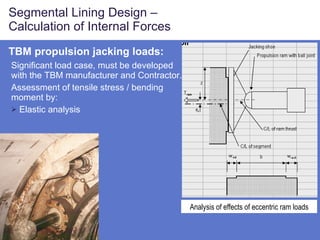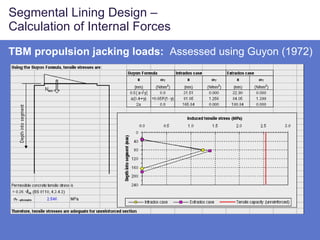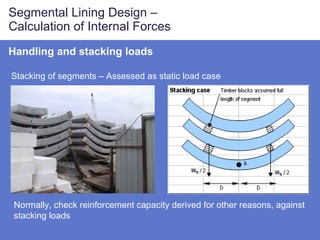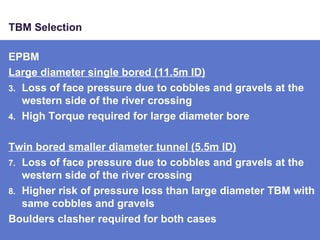The document discusses the design of precast segmental tunnel linings used for shield tunneling. It covers key aspects of segmental lining design including geometry, calculation of internal forces, reinforcement design, segment manufacture, waterproofing, and types of tunnel boring machines (TBMs) used for shield tunnel excavation.
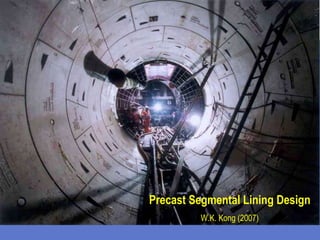










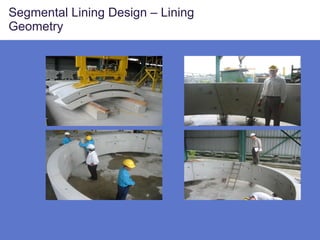




![Segmental Lining Design – Calculation of Internal Forces Ground and Groundwater loading Critical design parameters - soil: Elastic modulus of soils (E) Earth pressure at rest (K o ) Shear strength (c u or c’, ’) [to determine soil-lining slippage] Critical design parameters - lining: Concrete properties (E, f cu ) Lining thickness & Number of joints (to determine Moment of Inertia) Use of staggered ring joints or cruciform joints](https://image.slidesharecdn.com/segmentalliningdesignpresentation-12952357105744-phpapp02/85/Segmental-Lining-Design-Presentation-17-320.jpg)
